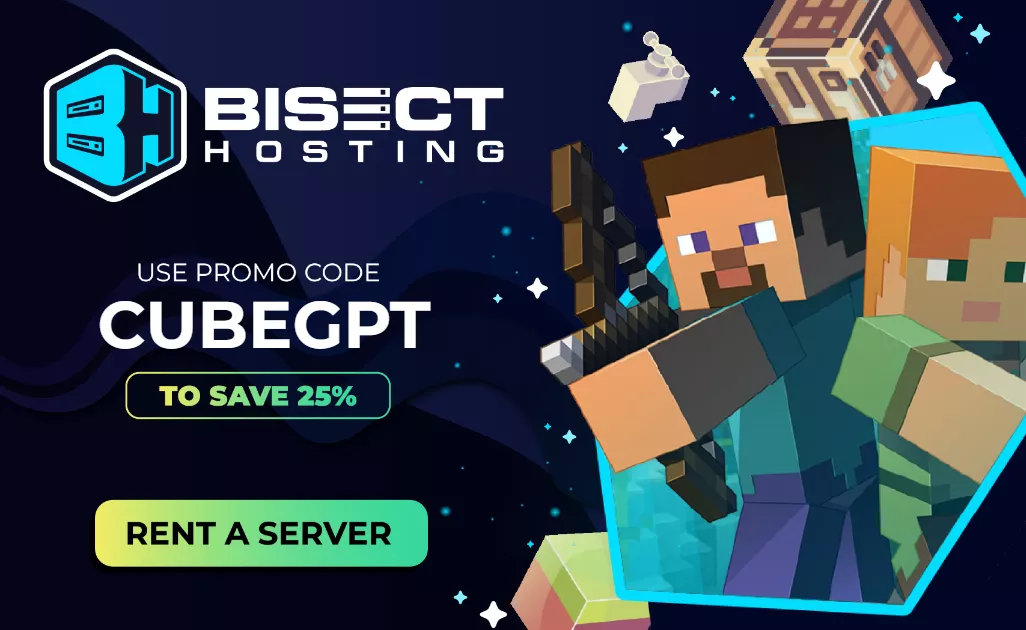Note
Developers and translators are welcome to join the CubeGPT Team!
Give GPT your idea, AI generates customized Minecraft structures.
BuilderGPT is an open source, free, AI-powered Minecraft structure generator. It was developed for minecraft map makers. It can generate structures in *.schem format and users can import them via worldedit, etc.
We are pleased to announce that SEC-API is offering a free apikey for users of programs developed by CubeGPT! This key has access to gpt-4-1106-preview and gpt-3.5-turbo-1106.
Note that this key does not have access to models such as gpt-4-vision and expires at any time.
Get the key from here. You can use it in BuilderGPT.
- Generate structures
- Preview rendered schematic in-program
- Export generated structures to
*.schemfiles - Export generated structures to
*.mcfunctionfiles - Advanced Mode (Use Stable Diffusion/DALL-E to generate the design image and let
gpt-4-visiongenerate the struture base on it.) - Edit structures
- Bukkit plugin generator. {*.jar} (BukkitGPT)
- Structure generator. {*.schem} (BuilderGPT)
- Serverpack generator. {*.zip} (ServerpackGPT or ServerGPT, or..?)
- Have ideas or want to join our team? Send us an email!
After the user enters a requirement, the program uses gpt-4-preview to expand the details of the requirement and generate a specific solution. The program then uses the generated solution to generate a drawing tag using gpt-4-preview, and then calls Stable Diffusion WebUI or DALL-E to generate a design using the generated tag. The generated schematic is then given to gpt-4-vision-preview along with the optimized requirements to generate a json containing the content of the structure, for example:
{
"materials": [
"A: \"minecraft:air\"",
"S: \"minecraft:stone\""
],
"structures": [
{
"floor": 0,
"structure": "SSSSSSSS\nSAAAAAAS\nSAAAAAAS\nSAAAAAAS\nSAAAAAAS\nSAAAAAAS\nSAAAAAAS\nSAAAAAAS\nSAAAAAAS\nSSSSSSSS"
},
{
"floor": 1,
"structure": "SSGGGGSS\nSAAAAAAS\nSAAAAAAS\nSAAAAAAS\nSAAAAAAS\nSAAAAAAS\nSAAAAAAS\nSAAAAAAS\nSAAAAAAS\nSSSSSSSS"
},
{
"floor": 2,
"structure": "SSGGGGSS\nSAAAAAAS\nSAAAAAAS\nSAAAAAAS\nSAAAAAAS\nSAAAAAAS\nSAAAAAAS\nSAAAAAAS\nSAAAAAAS\nSSSSSSSS"
},
{
"floor": 3,
"structure": "SSSSSSSS\nSAAAAAAS\nSAAAAAAS\nSAAAAAAS\nSAAAAAAS\nSAAAAAAS\nSAAAAAAS\nSAAAAAAS\nSAAAAAAS\nSSSSSSSS"
},
{
"floor": 4,
"structure": "SSSSSSSS\nSSSSSSSS\nSSSSSSSS\nSSSSSSSS\nSSSSSSSS\nSSSSSSSS\nSSSSSSSS\nSSSSSSSS\nSSSSSSSS\nSSSSSSSS\n"
}
]
}The program then parses this json response. Then it uploads the image (headless) to cubical.xyz and downloads the rendered image from the site using playwright.
Warning
The version of the executable is still in the testing process. Plan B is recommended if possible.
Nothing. Just download the executable file and run it.
You can use BukkitGPT on any device with Python 3+.
And you need to install the depencies with this command:
pip install -r requirements.txt
(Make sure you have the Python environment installed on your computer)
- Download
windows-build.ziporlinux-build.zipfrom the release page and unzip it. - Edit
config.yaml, fill in your OpenAI Apikey. If you don't know how, remember that Google and Bing are always your best friends. - Run
ui.exe(Windows) orui(Linux), enter the description and let GPT generate the structure. - Find your structure in
/generated/<name>.schem. - Import the file into the game via worldedit or other tools. (Google is your best friend~~)
- Download
Source Code.zipfrom the release page and unzip it. - Edit
config.yaml, fill in your OpenAI Apikey. If you don't know how, remember that Google and Bing are always your best friends. - Run
ui.py(bashpython ui.py), enter the description and let GPT generate the structure. - Find your structure in
/generated/<name>.schem. - Import the file into the game via worldedit or other tools. (Google is your best friend~~)
- Download
Source Code.zipfrom the release page and unzip it. - Edit
config.yaml, fill in your OpenAI Apikey. If you don't know how, remember that Google and Bing are always your best friends. - Run
console.py(bashpython console.py), enter the description and let GPT generate the structure. - Find your structure in
/generated/<name>.schem. - Import the file into the game via worldedit or other tools. (Google is your best friend~~)
If you like the project, you can give the project a star, or submit an issue or pull request to help make it better.
Copyright [2024] [CubeGPT Team]
Licensed under the Apache License, Version 2.0 (the "License");
you may not use this file except in compliance with the License.
You may obtain a copy of the License at
http://www.apache.org/licenses/LICENSE-2.0
Unless required by applicable law or agreed to in writing, software
distributed under the License is distributed on an "AS IS" BASIS,
WITHOUT WARRANTIES OR CONDITIONS OF ANY KIND, either express or implied.
See the License for the specific language governing permissions and
limitations under the License.






